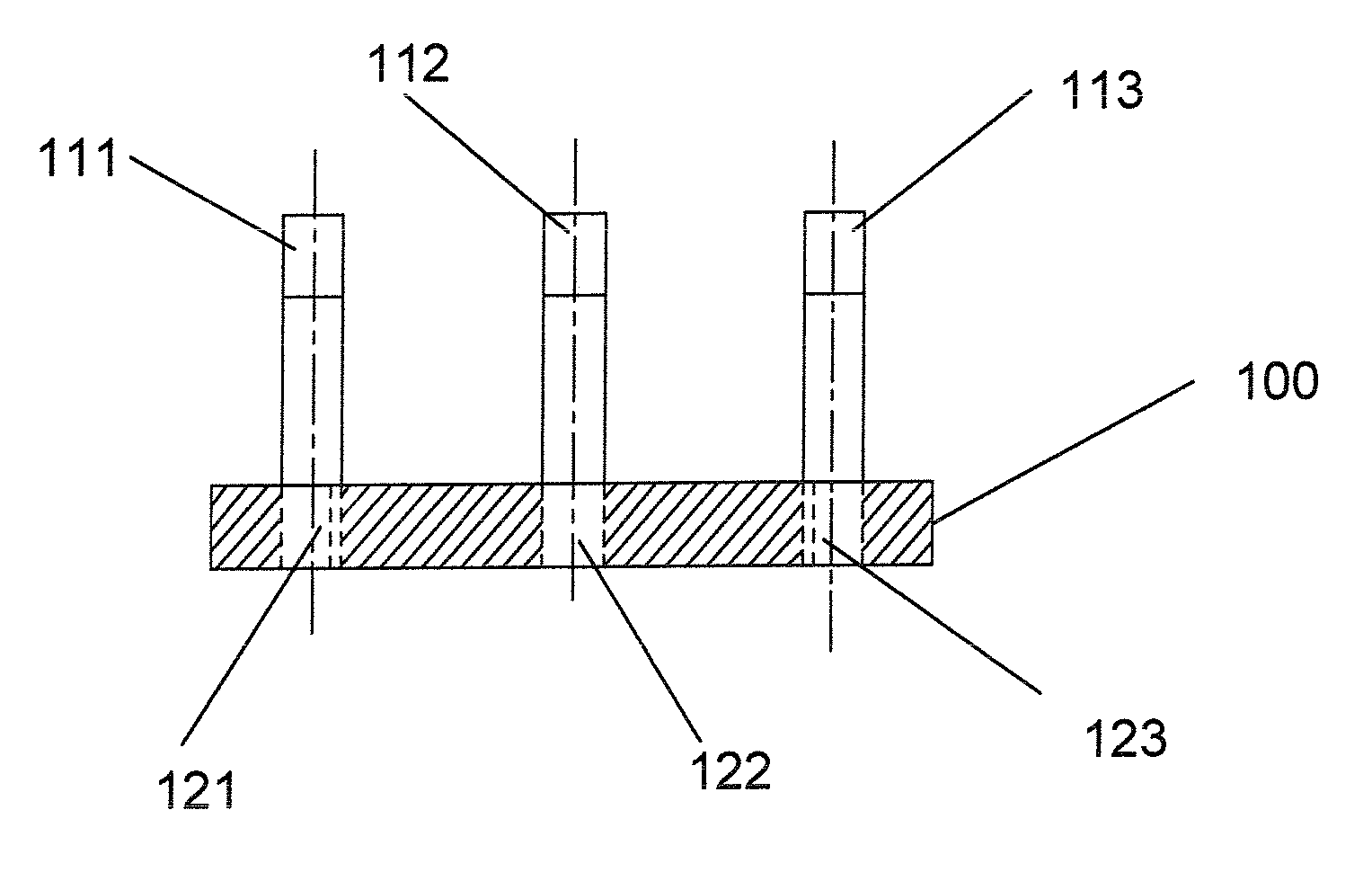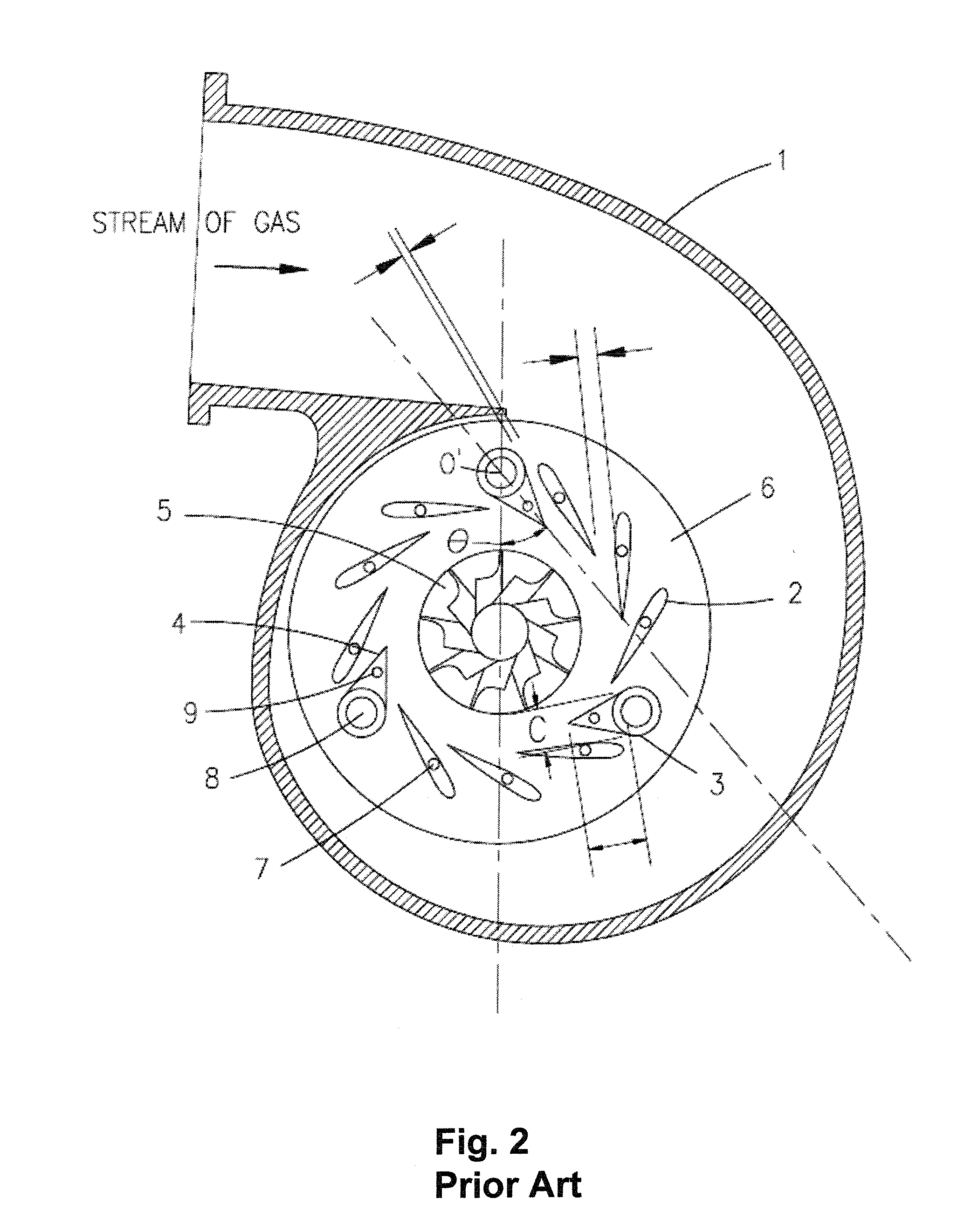Variable geometry turbocharger lower vane ring retaining system
a technology of retaining system and turbocharger, which is applied in the direction of machines/engines, stators, liquid fuel engines, etc., can solve the problems of detriment to the components of the turbocharger, aerodynamic inefficiencies, twisting motion, etc., and achieves the effect of minimizing the effect of thermal growth, reducing the potential for vanes to stick, and maintaining efficiency
- Summary
- Abstract
- Description
- Claims
- Application Information
AI Technical Summary
Benefits of technology
Problems solved by technology
Method used
Image
Examples
Embodiment Construction
[0049]In the prior art the vanes rings are firmly attached to the turbine housing, which is subjected to a non-homogeneous thermal profile. This means that uneven thermal expansion and deformation in the turbine housing is mechanically imparted to the vane ring assembly (vane rings, mounting hardware and vanes) which causes rubbing between the moving vanes and the static vane rings ultimately causing sticking of the vanes. The inventors realized that by decoupling the vane ring assembly from being rigidly mounted to the turbine housing would remediate the sticking problem.
[0050]In accordance with the present invention, as depicted in FIGS. 14 and 15, a first set of fasteners is used to fasten the lower vane ring to the turbine housing, and a second set of fasteners is used to fasten the lower vane ring to the upper vane ring. By not having the upper and lower vane rings fastened to the turbine housing by the same set of fasteners, the vane ring assembly is effectively decoupled from...
PUM
 Login to View More
Login to View More Abstract
Description
Claims
Application Information
 Login to View More
Login to View More - R&D
- Intellectual Property
- Life Sciences
- Materials
- Tech Scout
- Unparalleled Data Quality
- Higher Quality Content
- 60% Fewer Hallucinations
Browse by: Latest US Patents, China's latest patents, Technical Efficacy Thesaurus, Application Domain, Technology Topic, Popular Technical Reports.
© 2025 PatSnap. All rights reserved.Legal|Privacy policy|Modern Slavery Act Transparency Statement|Sitemap|About US| Contact US: help@patsnap.com



